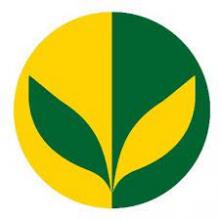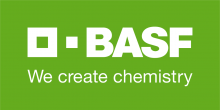Biology and occurrence
Brown rust (Puccinia triticina) is a foliar pathogen of wheat and initiates disease by many cycles of airborne uredospores, particularly in the spring. It is favoured by warmer conditions compared to yellow rust and tends to develop later in the summer than yellow rust, during warm, humid spells of weather.
The disease is more prevalent in the south and east of England due to the relatively warm and dry conditions. Mild winters and dry springs favour severe epidemics as more spores are produced and dispersed, particularly because dry conditions in spring are usually associated with dew at night, which allows infection.

Life cycle of brown rust (Puccinia triticina) adapted from the Encyclopaedia of Cereal Diseases.
Symptoms
Brown rust can be seen in th autumn months on early sown crops, the disease is identifiable by orange/brown pustules. During the later months brown rust develops in a random formation which is digusinshable from yellow rust which develops in stripes. Whilst most commonly seen on the leaves brown rust can also be found on the stems and glumes of the plant.
Management recommendations
Varietal resistance offers an effective method to manage the disease. Use the AHDB Recommended List – scroll to page 10 and 11 to check the current resistance rating of varieties (this has a 1-9 scale, where 9 represents good resistance and 1 represents extreme susceptibility). Compared to yellow rust, there are fewer varieties available with good resistance (8 or 9) to brown rust. In addition, current news on development of new races of brown rust in regions of the UK can be seen using the AHDB UKCPVS site at: https://ahdb.org.uk/ukcpvs
Monitor all crops regularly for rust symptoms focusing on early-sown crops in high-risk regions.
Resistance ratings do not guarantee durability of resistance. New brown rust races can appear, so check all varieties for brown rust lesions.
Diversifying varieties can help reduce the risk of disease spread between varieties.
Start your disease management in high-risk crops with early spring foliar fungicides.
Available fungicides include: azoles (DMIs; e.g. prothioconazole), SDHIs (e.g. bixafen), strobilurins (e.g. pyraclostrobin) and spiroketalmines (e.g. spiroxamine) fungicides, used in mixtures, to protect crops from brown rust. Information on current fungicide efficacy is available from the AHDB – see pages 9-10 in this Fungicide Resistance Guide.
Related links
Information and images from Rothamsted's Croprotect webpage supported by BBSRC NERC Sustainable Agriculture Research & Innovation Club








